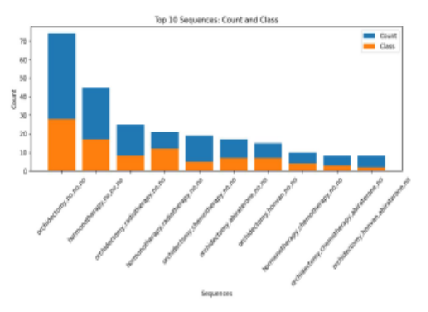


Indian Journal of Science and Technology
DOI: 10.17485/IJST/v17i11.3157
Year: 2024, Volume: 17, Issue: 11, Pages: 1097-1106
Original Article
Garvita Ahuja1, Priyal1, Ishleen Kaur2*, Deepali Virmani1
1Vivekananda Institute of Professional Studies- Technical Campus, 110034, Delhi, India
2Sri Guru Tegh Bahadur Khalsa College, University of Delhi, 110009, Delhi, India
*Corresponding Author
Email: [email protected]
Received Date:14 December 2023, Accepted Date:08 February 2024, Published Date:07 March 2024
Objective: Prostate cancer, a formidable life-threatening ailment predominantly affecting males, ranks as the third most prevalent global tumor. Its formidable nature arises from the persistent challenges encountered in early detection, often leading to delayed diagnoses and more advanced disease stages. The primary objective is to harness the power of advanced machine learning techniques for the prediction of patient survivability in prostate cancer cases. Furthermore, the study aims to identify a set of treatments pivotal for ensuring positive survival rates. Methods: This investigation leverages a comprehensive retrospective dataset comprising 410 cases of prostate cancer, collected from a Cancer Centre in New Delhi. This dataset encompasses vital clinical and treatment attributes. Models, including Artificial Neural Networks (ANN), Adaboost, Random Forest, etc., are thoroughly evaluated. In addition, the Generalized Sequential Pattern (GSP) algorithm is utilized to scrutinize the treatment attributes, thereby uncovering frequent patterns and their correlation with survival rates. Findings: The ANN model emerges as the most promising, exhibiting an impressive 84.14% accuracy. The findings stemming from these classification techniques, as well as the insights garnered through sequential mining, underscore the pivotal role of machine learning in the prognostication of prostate cancer. This advancement holds the potential to transform precision medicine and enhance patient care strategies on a global scale. Novelty: The study used clinical dataset to predict the survival of cancer patients using neural networks. GSP algorithm is also modified to uncover frequent treatment patterns in patients.
Keywords: Artificial Neural Network, Cancer, Machine learning, Sequence mining, Survival analysis
© 2024 Ahuja et al. This is an open-access article distributed under the terms of the Creative Commons Attribution License, which permits unrestricted use, distribution, and reproduction in any medium, provided the original author and source are credited. Published By Indian Society for Education and Environment (iSee)
Subscribe now for latest articles and news.